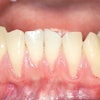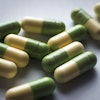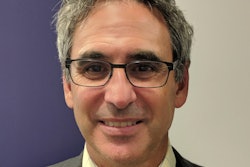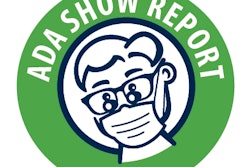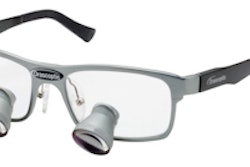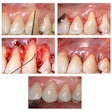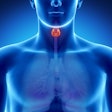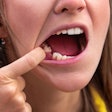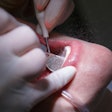
SAN FRANCISCO - Dental technology specialists Marty Jablow, DMD; John Flucke, DDS; and Paul Feuerstein, DMD, showcased some of their favorite high-tech products in an entertaining session on August 17 at the California Dental Association's (CDA) fall meeting.
Their three-hour tag-team presentation covered a plethora of anesthesia products, restorative materials, x-ray systems, curing lights, and more.
Anesthesia systems
The STA (single tooth anesthesia) system from Milestone Scientific uses a vibrational method to ease pain. Additionally, it tells dentists if they have positioned the needle properly (visual and auditory signals) and controls the anesthesia flow to provide low-pressure injections.
The unit is designed to do intraligamentary periodontal ligament (PDL) injections, replacing the need for inferior alveolar blocks for single-tooth anesthesia.
"Patients don't feel the pinch of the needle and, more important, there are no aftereffects and no drooling later," Dr. Jablow noted.
It provides nearly "instantaneous" anesthesia, he added. "I can go straight to work and don't have to wait 10 minutes for a block," Dr. Jablow said.
Because it doesn't look like a traditional syringe, it's less frightening for children. "I tell kids it's a straw. It's pretty much painless. Think of it as a perio probe," he advised.
VibraJect from ITL Dental also uses vibration and the pain gate theory to ease injection discomfort. This battery-operated device attaches to the barrel of the syringe, causing the needle itself to vibrate.
The Accupal cordless palatal injection system also uses vibration to precondition oral tissue. Accupal vibrates the injection site 360° proximal to the needle penetration. After placing the device at the injection site, the unit lights up the area and begins to vibrate. The dentist then places the needle through a hole in the head of the device to deliver the injection.
DentalVibe is a cordless injection system that also uses vibration diversion. The device's forked tip guides the syringe and stimulates A-beta nerve fibers that travel much faster than C-nerve fibers, which carry pain sensations.
Onpharma's Onset cartridge connector system uses a sterile tube that transfers sodium bicarbonate into syringes with lidocaine to buffer the anesthesia's acid, producing nearly instantaneous anesthesia without needle stinging. The cartridge connector system can be used with the company's Onset mixing pen.
Septodont's OraVerse turns off anesthesia in half the time it usually takes for numbness to go away for patients. It comes in tubes and is administered by injection with a standard dental syringe using the same injection site and identical technique as those used for anesthetic.
"Patients can quickly get back to work and talk normally," Dr. Flucke said.
Cloud-based systems
Storing data in cloud-based systems has two advantages: They reduce both hardware and IT costs.
Also, they are not affected by disasters such as the tornadoes and hurricanes that destroyed or damaged computers in dental offices in Oklahoma and New Jersey in the last few years, Dr. Jablow noted.
Cloud-based systems don't need to be backed up or undergo periodic upgrades, and they are available 24/7 anywhere via Internet connections.
However, storing digital x-rays may be an issue, Dr. Jablow noted.
Several dental companies make cloud-based software, including Planet DDS, MOGO, Curve Dental, and Dentrix's Ascend system.
Restorative products
Kerr Dental's SonicFill is a sonic-activated, bulk fill dental composite system for posterior restorations that requires no additional capping layer. It doesn't shrink and takes less than a minute to do restorations, Dr. Jablow said.
Kerr also offers the cordless, battery-free Demi Ultra LED curing light, which is powered by an ultracapacitor that can fully charge in less than 40 seconds. It can take 25 10-second cures before it needs to be recharged, Dr. Fluke said.
Septodont's Biodentine is a bioactive dentin substitute that can be used for endodontic repairs and restorative procedures, and sets up in about 10 minutes.
Other highlights
Philips Sonicare AirFloss uses compressed air to squirt water or mouthwash to disrupt and remove plaque between teeth and can be recharged using standard USB ports. One dentist in the audience noted that it resembled old-fashioned Waterpiks, but Dr. Fluke said the AirFloss produces a much stronger stream of water to clean teeth.
Orascoptic's XV1 is a battery-operated, self-contained LED headlight that doesn't have cords that snag and virtually eliminates the need for overhead dental lights, according to Dr. Jablow. It features ultralight optics, the smallest LED lights available in headlights.
SciCan's Statim G4 high-speed, high-pressure autoclave can run a load in about 10 minutes, Dr. Fluke said. Its wireless technology provides a direct channel of communication through the Internet and it displays current cycle information. The system saves all the data from each cycle and provides automatic notification if it needs servicing. This feature eliminates paying for repairmen to come and diagnose the problem, then return with necessary parts, Dr. Jablow noted.
